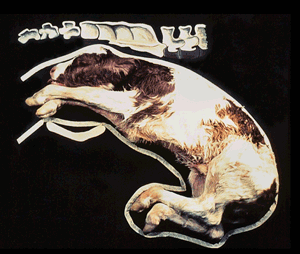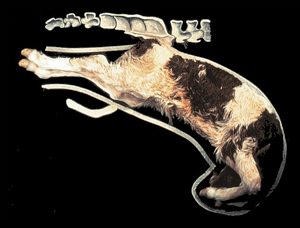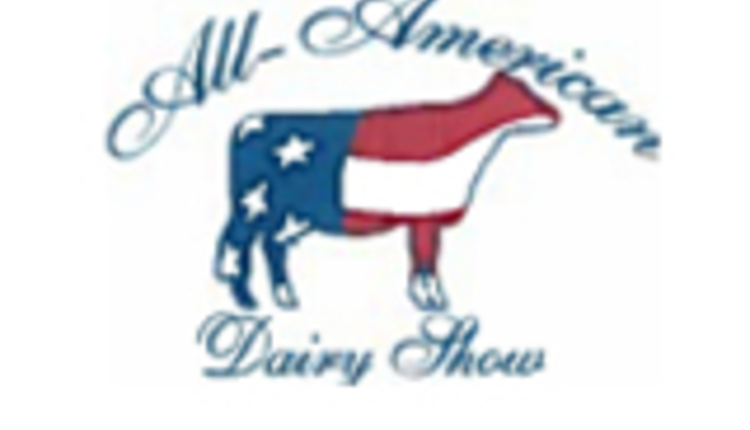That heifer is definitely in labor. Sometimes you can just tell. She is straining and looks uncomfortable. Plus, there has been little progress for an hour or two. After having her palpated, you quickly realize that this is no average calving.
In our previous article (March 25 issue, page 226), we identified the stages of calving and gave tips on when it is time to intervene. However, for some deliveries, calves may choose to take a different route. Abnormal calving positions are important to learn because, when faced with one, you must know how to correct it, or you will learn the hard lesson that not all calves survive.
Before correcting, determine if the calf is alive. Below are a few ways experts at Colorado State say you can determine that:
When forelimbs are retained, which is most common, secure the head by placing a chain behind the poll and through the mouth, then lubricate the head, and push it back into the uterus. Search for one of the legs, and grasp it just below the knee. The limb should be pulled until bent at the knee. Next, slip your hand down the limb and grasp the hoof, cupping it to protect the uterus. With one hand, repel the knee in a forward, upward, and out direction while the other hand moves the hoof in an inward, backward direction. Use a small rope or chain if getting both arms in the cow is a problem. This is best accomplished while cows are in the standing position and are not straining too hard. Remember that correcting abnormal calving positions should always be done by someone with experience or under the watchful eye of one for guidance.
Depending on the position of the calf, rotation might be needed. Rotation is facilitated if the hand can be placed under the withers or under the shoulder joint of the calf. The goal is to lift the chest upward and, at the same time, rotate the body. When the calf is backwards and upside down, cross the hinds legs and rotate the body. After an abnormal position is corrected, delivery can begin.
See the different abnormal calving positions below, and learn how to correct them. We would like to thank the Drost Project for the photos (www.drostproject.org).
After a calf's position is corrected, you can begin to consider pulling the calf. Keep in mind, though, that this is done only after calves are in a normal presentation and posture. To start off, place the chains above the fetlock, and take a half-hitch below the fetlock joint, as well. It will be easier for the cow to deliver the calf if she is lying down on her right side.
Before pulling a calf can begin, take time to think about hygiene again. Hygiene should always be a top priority when assisting with calving. It is also a good time to remember lubrication and making sure that the cow's birth canal is dilated. You can use your hands to do this if they are clean. Your hands and the cow's vulva should be cleaned repeatedly.
If the calf is in a normal position, pull one leg of the calf at a time through the pelvis. Once the first shoulder is through the birth canal, it should be held in place, and pulling should begin on the other leg. This is a two-person job. Once the shoulders are through, you can continue delivering the calf.
This might be the time when the cow takes a break. It is also when calves should start to breathe on their own because the umbilical cord is compressed. Because the calf is likely large, you'll need to rotate the calf 90 degrees. Cross the chains, and use your hands to guide the calf's rotation.
After calves begin to breathe, the rest of the delivery can happen. If you're constantly pulling, the calf won't be able to breathe, so give it some pulling breaks. If you're delivering a backwards calf, make the 90-degree rotation first. Also, pulling should occur on both legs, at the same time, by two people. If the calf's hips can pass through the pelvis of the cow, you now have two to three minutes to rotate the calf to be right side up to come through the pelvis of the cow. If you still can't fit the calf through, call the veterinarian - it will be essential for the life of the calf and the cow.
Although sometimes tricky, the birth of a new calf is certainly exciting. Your next move includes getting plenty of high-quality colostrum to the calf to drink. The time shortly after calving can have a great impact on the future success of the individual.
 Backwards or normal posterior position
Backwards or normal posterior position
In this position, the rump is positioned closest to exit. This presentation can be corrected by repositioning the rear legs so the calf can be pulled or pushed out backwards.
 Normal anterior position
Normal anterior position
This is what we hope calves will look like upon delivery. Front legs are first, followed by head and neck. Legs, head, and neck are extended.
 Retention of one or both forelimbs
Retention of one or both forelimbs
One or both forelegs or rear legs could be retained. This position can be corrected by using the directions provided earlier.
Transverse
Sometimes calves will lie with all four limbs extended into the birth canal or with their back against the pelvic opening. This can be corrected for delivery, but it is difficult, so a C-section may be necessary.
Twins
Discovering there is one more calf in there isn't usually good news unless both end up being heifers, of course. Twins are usually smaller, so, if they enter the vagina one at a time, there usually isn't a problem. However, if both come at the same time, extract the closest one first, and repel the other into the uterus to come out second.
Upside down
Every once in awhile, calves will enter the birth canal either frontwards or backwards in addition to being upside down. This can be corrected by crossing the limbs of the calf, one on top of the other, and trying to rotate the calf. The head should be rotated at the same time.
Click here to return to the Reproduction E-Sources
100410_268
In our previous article (March 25 issue, page 226), we identified the stages of calving and gave tips on when it is time to intervene. However, for some deliveries, calves may choose to take a different route. Abnormal calving positions are important to learn because, when faced with one, you must know how to correct it, or you will learn the hard lesson that not all calves survive.
Before correcting, determine if the calf is alive. Below are a few ways experts at Colorado State say you can determine that:
- Withdrawal reflex - Pinch between the digits of the hoof, and the calf will withdraw its limb in response.
- Suckle reflex - Place a clean hand in the mouth, and you can feel the calf's mouth close or tongue move.
- Push gently on the calf's eye; usually the calf responds by withdrawing its head.
- Check for the heartbeat by running your hand down alongside of the chest and feel for the heartbeat, or, in a backwards calf, feel for a pulsation in the umbilical cord.
When forelimbs are retained, which is most common, secure the head by placing a chain behind the poll and through the mouth, then lubricate the head, and push it back into the uterus. Search for one of the legs, and grasp it just below the knee. The limb should be pulled until bent at the knee. Next, slip your hand down the limb and grasp the hoof, cupping it to protect the uterus. With one hand, repel the knee in a forward, upward, and out direction while the other hand moves the hoof in an inward, backward direction. Use a small rope or chain if getting both arms in the cow is a problem. This is best accomplished while cows are in the standing position and are not straining too hard. Remember that correcting abnormal calving positions should always be done by someone with experience or under the watchful eye of one for guidance.
Depending on the position of the calf, rotation might be needed. Rotation is facilitated if the hand can be placed under the withers or under the shoulder joint of the calf. The goal is to lift the chest upward and, at the same time, rotate the body. When the calf is backwards and upside down, cross the hinds legs and rotate the body. After an abnormal position is corrected, delivery can begin.
See the different abnormal calving positions below, and learn how to correct them. We would like to thank the Drost Project for the photos (www.drostproject.org).
After a calf's position is corrected, you can begin to consider pulling the calf. Keep in mind, though, that this is done only after calves are in a normal presentation and posture. To start off, place the chains above the fetlock, and take a half-hitch below the fetlock joint, as well. It will be easier for the cow to deliver the calf if she is lying down on her right side.
Before pulling a calf can begin, take time to think about hygiene again. Hygiene should always be a top priority when assisting with calving. It is also a good time to remember lubrication and making sure that the cow's birth canal is dilated. You can use your hands to do this if they are clean. Your hands and the cow's vulva should be cleaned repeatedly.
If the calf is in a normal position, pull one leg of the calf at a time through the pelvis. Once the first shoulder is through the birth canal, it should be held in place, and pulling should begin on the other leg. This is a two-person job. Once the shoulders are through, you can continue delivering the calf.
This might be the time when the cow takes a break. It is also when calves should start to breathe on their own because the umbilical cord is compressed. Because the calf is likely large, you'll need to rotate the calf 90 degrees. Cross the chains, and use your hands to guide the calf's rotation.
After calves begin to breathe, the rest of the delivery can happen. If you're constantly pulling, the calf won't be able to breathe, so give it some pulling breaks. If you're delivering a backwards calf, make the 90-degree rotation first. Also, pulling should occur on both legs, at the same time, by two people. If the calf's hips can pass through the pelvis of the cow, you now have two to three minutes to rotate the calf to be right side up to come through the pelvis of the cow. If you still can't fit the calf through, call the veterinarian - it will be essential for the life of the calf and the cow.
Although sometimes tricky, the birth of a new calf is certainly exciting. Your next move includes getting plenty of high-quality colostrum to the calf to drink. The time shortly after calving can have a great impact on the future success of the individual.
 Backwards or normal posterior position
Backwards or normal posterior positionIn this position, the rump is positioned closest to exit. This presentation can be corrected by repositioning the rear legs so the calf can be pulled or pushed out backwards.
 Normal anterior position
Normal anterior positionThis is what we hope calves will look like upon delivery. Front legs are first, followed by head and neck. Legs, head, and neck are extended.
 Retention of one or both forelimbs
Retention of one or both forelimbsOne or both forelegs or rear legs could be retained. This position can be corrected by using the directions provided earlier.
Transverse
Sometimes calves will lie with all four limbs extended into the birth canal or with their back against the pelvic opening. This can be corrected for delivery, but it is difficult, so a C-section may be necessary.
Twins
Discovering there is one more calf in there isn't usually good news unless both end up being heifers, of course. Twins are usually smaller, so, if they enter the vagina one at a time, there usually isn't a problem. However, if both come at the same time, extract the closest one first, and repel the other into the uterus to come out second.
Upside down
Every once in awhile, calves will enter the birth canal either frontwards or backwards in addition to being upside down. This can be corrected by crossing the limbs of the calf, one on top of the other, and trying to rotate the calf. The head should be rotated at the same time.
100410_268











